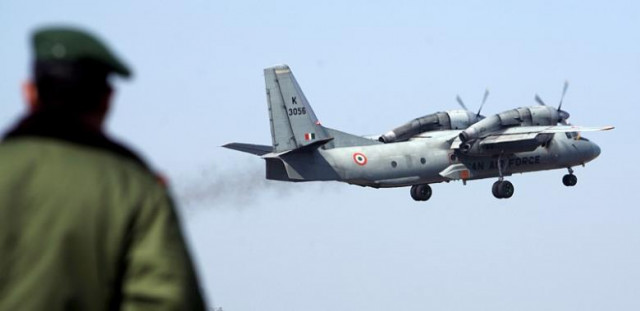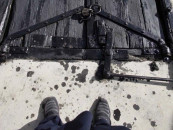India to have 'eye in the sky' to spy on Pakistan, China
IAF already has three Phalcon systems which use Israeli early-warning radars

A soldier stands guard as an Indian Air Force AN-32 transport aircraft carrying security personnel takes-off from the technical airport in Jammu February 9, 2008. PHOTO: REUTERS
The system's induction will boost the force's capability to detect hostile cruise missiles, fighter jets or drones. "The first AeW&Cs is ready for induction while the second one is in the final stages of tests and certification," a DRDO source told Times of India. Work on the final one is in progress.
Long-stalled contract: India signs deal for 36 French fighter jets
India hopes to match Pakistan and China's capabilities on the front by inducting the system. The IAF already has three Phalcon systems (AWACS) which use Israeli early-warning radars mounted on IL-76 aircraft.
Blow to Pakistan? India could become next F-16 hub
The indigenous AeW&CS, developed by the Centre for Airborne Systems (CABS) in Bengaluru and integrated on Brazilian-made Embraer-145 aircraft, is equipped with 240-degree coverage. The system can detect, identify and classify threats present in the surveillance area and act as a command and control centre to support air defence operations.
"It is equipped with multiple communication and data links that can alert and direct fighters against threats while providing recognisable air surveillance pictures to commanders at the ground exploitation stations that are strategically located," the DRDO stated.
"The Electronic and Communication Support Measures of the system can also intercept and gather electronic and communication intelligence from radar transmissions and communication signals. It is a multi-sensor surveillance system that can perform the following operational roles as defined by the IAF," a high-ranking functionary said.
India planning to spend $223b on weapons over next 10 years
According to TOI, Pakistan has four Swedish Saab-2000 AeW&C aircraft and four Chinese-origin ZDK-03 (KJ-200) AWACS, while China has over 20 AWACS, including the new KJ-500 ones that can track over 60 aircraft at ranges of up to 470km.
This article originally appeared on Times of India.



















COMMENTS
Comments are moderated and generally will be posted if they are on-topic and not abusive.
For more information, please see our Comments FAQ